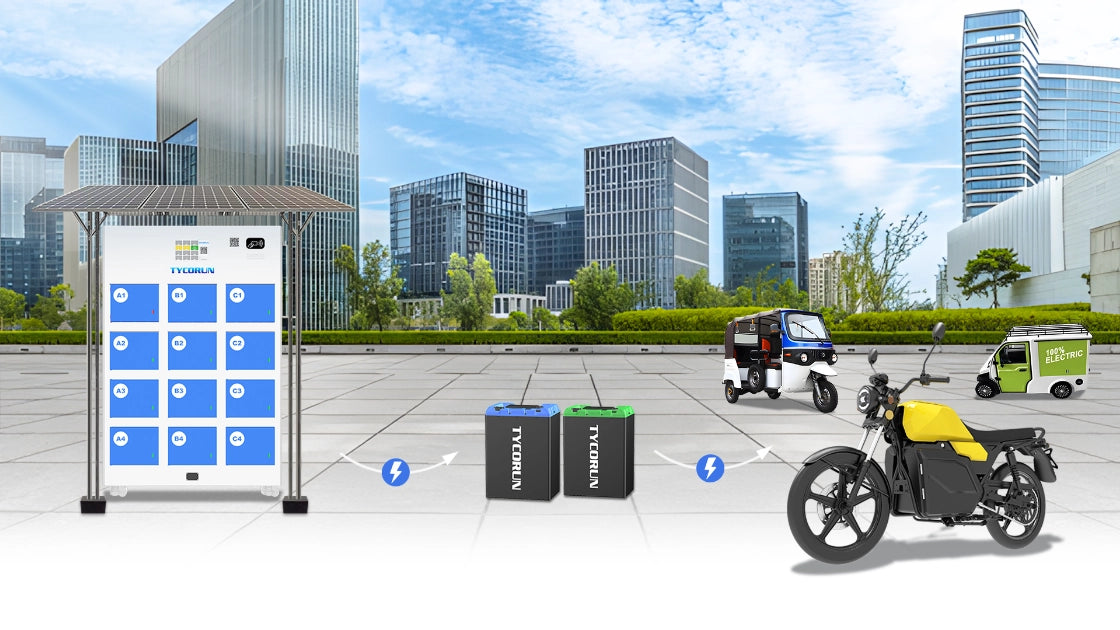
Since the beginning of the 21st century, thanks to the expansion of investment in the photovoltaic industry by the world's major economies, global photovoltaic installed capacity has grown rapidly, and market demand for photovoltaic components including solar panels has also been rising.
Specifically, according to data predicted by the International Energy Agency (IEA), in 2022, the world's new photovoltaic installed capacity reached 197GW, a year-on-year increase of 25% in 2021, and is expected to achieve strong growth again. Against this background, the application demand for global solar panels has also been further expanded, with the market size growing to approximately US$40 billion in 2022, and is expected to exceed US$47 billion by 2026.
Take Egypt as an example. Egypt spans two continents, Asia and Africa, and has a population of more than 100 million. It is one of the important economies in the Arab world and Africa. In recent years, as major economies around the world accelerate energy transformation, Egypt has also vigorously developed renewable energy industries including wind and solar energy in Egypt. This article will introduce you to the industry of solar energy in Egypt, including the development potential, current development policies and related projects.
Main content:
1. Current status of renewable energy in Egypt
Egypt's goal is to have renewable energy installed capacity reach 8,778 MW in 2022, accounting for 14.4% of power generation (excluding hydropower), and plans to have renewable energy power generation accounting for 50% in 2030.
Egypt is facing the challenge of balancing the state budget and meeting energy needs amid rising global oil prices. The government this year started blackouts for one hour a day to reduce its electricity load, but later extended them to two hours in some areas.
The government plans to eliminate electricity subsidies as part of an economic reform program overseen by the International Monetary Fund. The plan aims to improve Egypt's fiscal and monetary conditions, but also imposes conditions and challenges, such as the removal of support for the electricity sector, which consumed some of the $12 billion in loans Egypt received from the International Monetary Fund in 2016.
Despite the power crisis, Egypt has maintained its power exports to Jordan and Sudan at 150-180MW per day. On the other hand, the renewable energy industry has witnessed a recovery this year, with total production approaching 6,000 MW, half of which comes from hydropower and the other half from wind and solar energy in Egypt.
Egypt plans to increase the share of renewable energy and use hydrogen blends as an alternative fuel in power plants. Financial data shows that in the first half of 2023, the amount of consumer loans for Egyptian home solar power system reached 341 million pounds (more than 11 million US dollars), which accounted for 1.66% of total consumer financing activities. The Egyptian government offers incentive programs to encourage citizens to switch to clean energy by supporting net metering and autonomous consumption of PV projects for the development of solar energy in Egypt.

2. Development status of solar energy in Egypt
According to statistics from the Egyptian Electricity and Renewable Energy Department, as of the end of 2020, Egypt's cumulative installed photovoltaic capacity reached 2.4GW, and domestic projects of solar energy in Egypt have also received investment and construction from many domestic and foreign companies.
For example, in August 2020, the European Bank for Reconstruction and Development (EBRD) provided a US$54 million loan to ACWA Power Company, mainly for the construction of the 200MW Kom Ombo solar photovoltaic power station. In addition, ACWA Power Company is developing a solar power plant construction project worth US$160 million, which started operation in the third quarter of 2022.
Generally speaking, the current investment enthusiasm in the market of solar energy in Egypt is relatively high, and there is strong demand for a variety of photovoltaic component applications, including solar panels and solar inverters like 1000w inverter or 3000w inverter.

According to the "Egyptian Solar Panel Market Investment Environment and Investment Prospects Assessment Report 2023-2027" released by the New Thinking Industry Research Center, Egypt has huge room for growth in photovoltaic installed capacity, and relatively low production costs such as labor and electricity prices, and preferential tariff policies have also enabled many overseas companies to accelerate their industrial deployment of solar energy in Egypt, thereby stimulating the development momentum of the solar panel market.
However, due to the late start of the market and the relative backwardness of technology and equipment, Egypt's application needs for solar panels and other components of solar power system mostly rely on imports. As the world's largest photovoltaic country, China exports huge amounts of solar panels every year, such as Power China, CEEC, JA Solar, Trina Solar, and Jinko. In the future, they will enter the Egyptian market with great competitive advantage.
3. Policies for the development of solar energy in Egypt
On September 25, 2023, Egypt announced several measures to encourage investment in renewable and new energy sectors:
- Revise rules and laws regarding electricity activities to unify public and private sector procedures and transactions based on the principle of competitive neutrality.
- Reduce the time for issuing, renewing licenses and certifications by 50%.
- Exemption from photovoltaic project integration fees for all net metering systems connected to the national grid, with project capacity up to 10MW.
- Emergency measures were taken on October 6 to solve the problem of investors in industrial development zones.
- Issued 31 licenses to the private sector for investment in electricity production and distribution.
- Develop norms for private companies to build electric vehicle charging piles and waive permit and license fees for 10 years.
- Changed the way users pay for consumer insurance, allowing one-year interest-free payments in installments.
- Developed standard contracts for investors to establish waste-to-energy facilities.
- Developed specifications for the construction of self-consumption power station systems.
- Issued necessary specifications and contract forms for consumers planning to convert electricity into renewable energy sources from the New Energy Production and Development Authority.

4. Challenges and future outlook
According to a report by Environment+Energy Leader, Egypt is the largest renewable energy country in Africa. The country has huge areas that can be used to build photovoltaic and wind energy power stations, with a potential installed capacity of up to 99.7GW. The government is offering tax incentives for green hydrogen projects, a policy aimed at expanding the market share of these projects in Egypt and supporting the country’s energy transition.
However, Egypt also faces some challenges in meeting its growing electricity needs, especially during periods of extreme heat, when increased loads lead to blackouts, with the government reducing loads and extending blackouts in some areas.
One solution to the power crisis is to further expand the scale of the distributed generation market. The distributed power station market has expanded this year due to high temperatures and power outage crises. The relative decline in PV module prices has also encouraged more people to switch to solar energy in Egypt, although the scarcity of US dollars has affected the import of PV modules.
5. Solar energy projects in Egypt
① 500MW Fars photovoltaic power station project
The project is located in the desert behind the village of Fares in the center of Kom Ombo and aims to build Africa's largest solar power plant with an installed capacity of 500MW. The project is implemented by a Chinese professional company and covers an area of 10,000 square meters. Expected to be completed in September 2024 and begin supplying power to the national grid, the project will create approximately 2,000 jobs.
② 40 MW Sharm El Sheikh photovoltaic power station project
The projects are part of the government's plan to transform Sharm El Sheikh into a green city through the use of renewable energy, including the installation of photovoltaic modules on rooftops, public buildings and solar street light installation.

③ 3700MW renewable energy project
On June 27, the Egyptian Ministry of International Cooperation announced the signing of financial closure agreements for four renewable energy projects with a total capacity of 3,700MW. These projects are included in the framework of the Water, Food and Energy Integration (NWFE) plan, including wind farms, solar power plants and hydroelectric stations.
④ 250MW Com Ompo photovoltaic power plant project
The project is a joint venture between the public and private sectors to establish a new photovoltaic power plant with a capacity of 250MW in Kom Ombo. On August 14, the Ministry of Electricity and Renewable Energy officially announced that the project is currently under construction and is expected to be completed in January next year.
⑤ 50MW Zaafarana photovoltaic power plant project
On August 14, an official from the Egyptian Ministry of Electricity and Renewable Energy announced the construction of a new 50MW project in the Zaafarana area of Suez Governorate, worth up to 38 million euros.
Related posts: global top 10 best solar inverter brands, top 10 best inverter brands in India, solar power in Thailand
















